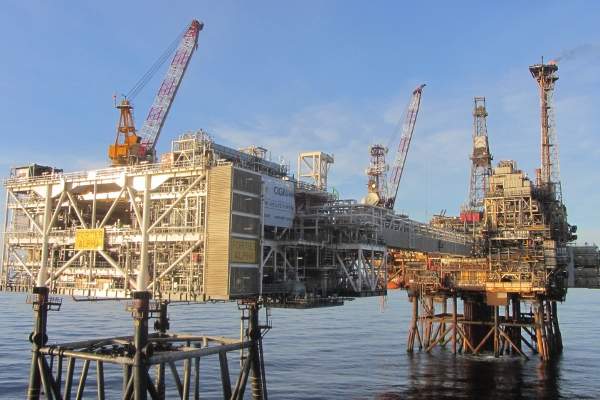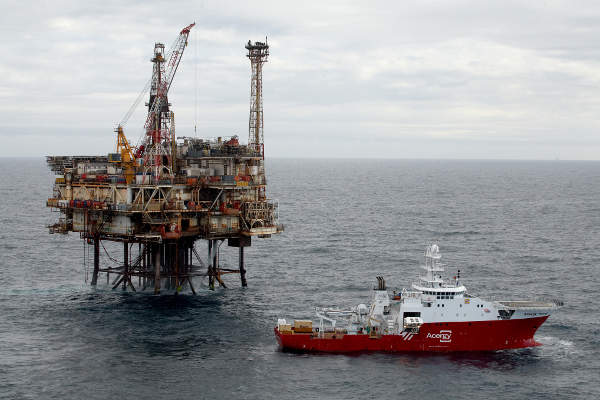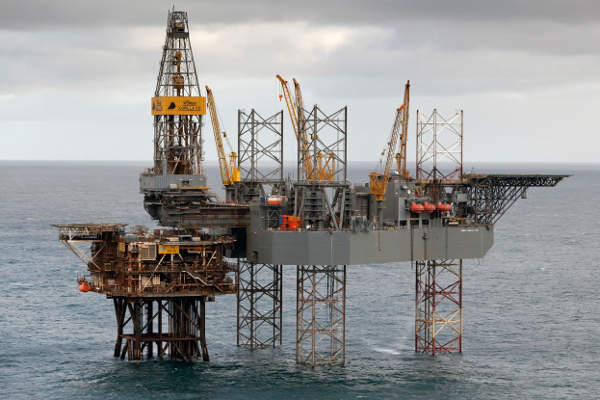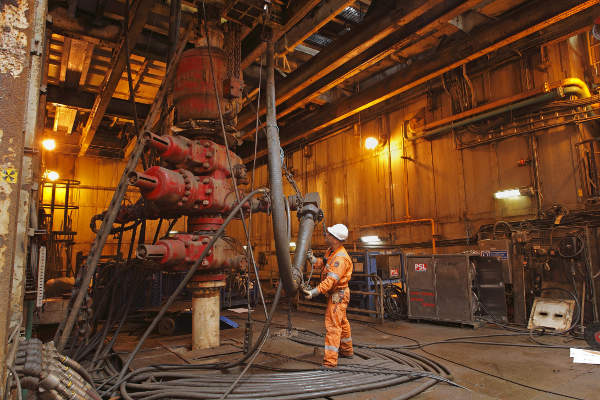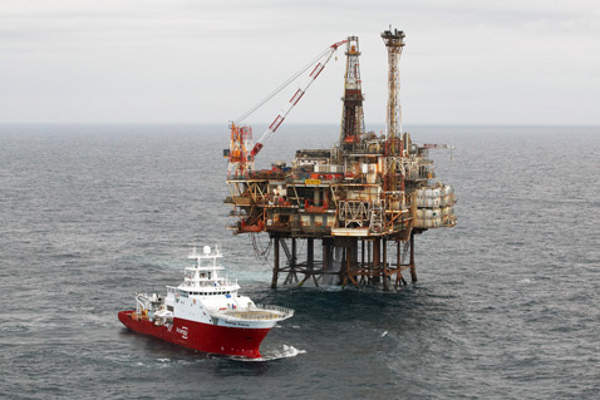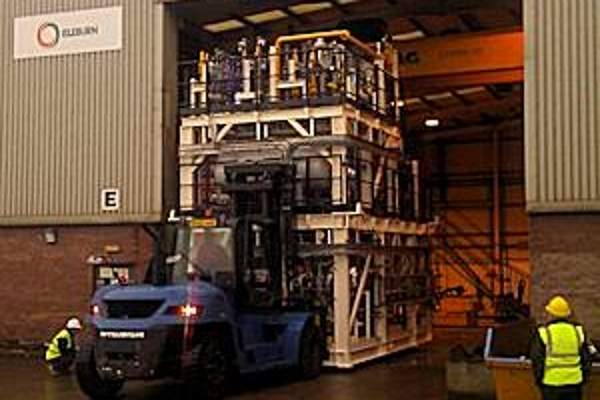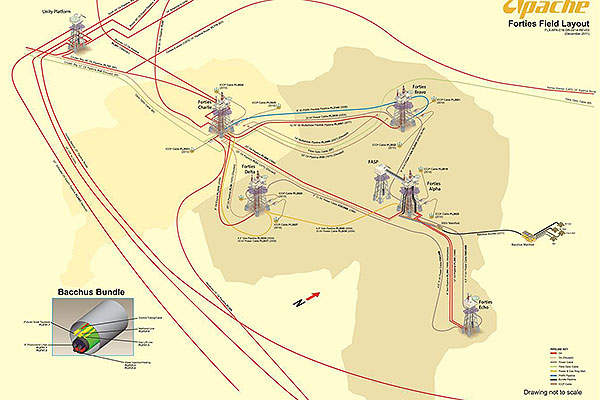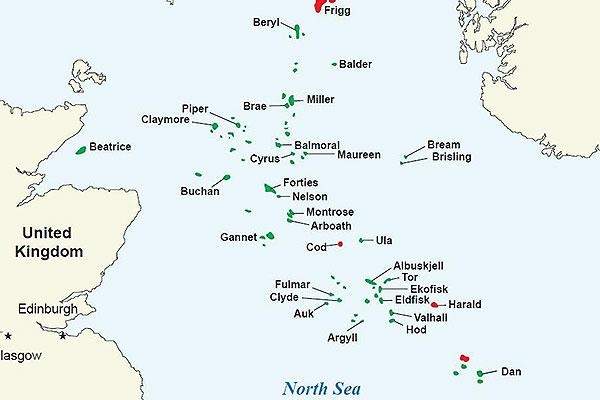
Forties Oilfield, located in the UK Licence Block 21/10, approximately 140 miles north-east of Aberdeen in the UK sector of the North Sea, was discovered by British Petroleum (BP) in October 1970.
The platforms at the field include Forties Alpha, Forties Bravo, Forties Charlie, Forties Delta and Forties Echo. The 31,000t Forties Charlie jacket was fabricated by Isleburn in 1974. KCA was awarded the contract in 1974 to carry out drilling and maintenance activities on the Forties Field.
The first four platforms were installed in the 1970s, while the Forties Echo platform was installed in the 1980s.
Initial years of production
Production from the field started in September 1975 and the Queen officially inaugurated the operations in November 1975. Production peaked at 500,000bpd in 1979, meeting around 25% of the country’s demand for oil at that time.
BP’s share of crude oil production from the field in was 75,000bpd in 1997, 76,000bpd in 1998 and 66,000bpd in 1999.
2002
Production from the field averaged 50,000bpd in 2002.
2003
Apache Corporation acquired 97.14% working interest in the field from BP in April 2003, at a cost of approximately $630m. Esso Exploration and Production UK (2.61%) and Shell UK (0.25%) were the co-owners of the field.
The field had 45 producing wells and was estimated to contain proven reserves of 144 million barrels of oil equivalent after the recovery of approximately 2.4 billion barrels, when Apache took over as the operator.
Apache immediately started a drilling and exploitation campaign to increase the production and extend the field’s life.
The field produced at an average of 41,000bpd and 1,400 million cubic feet per day of natural gas in 2003.
2004
Apache drilled 12 new wells and performed certain platform repair and maintenance works in 2004, which increased the average production from the field to 61,680bpd in the fourth quarter of 2004, compared with 40,950bpd during the same period in 2003.
2005
By end of the fiscal year 2005, the Forties field accounted for 9.3% of Apache’s total estimated proven reserves.
A new 3D seismic survey across the field was completed in 2005. The company also drilled 18 wells and invested $198m for maintenance of the facilities.
2006
Gabon’s Ruche offshore area accommodates the Ruche A (Ruche), Ruche B (Tortue), Ruche C (Moubenga) and Ruche D (Walt Whitman) discoveries.
A new power-generation and gas ring, as well as a multi-platform distribution system, were commissioned in 2006. Upgrade of the water-injection system was also completed.
Bardex upgraded the rig skidding systems on the Forties Alpha and Bravo platforms. Apache invested $112m for the field’s facility upgrades in 2006.
The seismic survey data acquired over Forties in 2005 was processed in 2006. Five exploration and development wells were drilled at Forties during the fiscal year; four of them were productive.
2007
Production from the field decreased by 8% in 2007 compared with 2006, due to suspension of drilling activities on the Alpha and Echo platforms, which underwent facility upgrades.
An export pumping system and produced water handling and injection systems were commissioned and upgrades to the drilling rigs were made in 2007.
The seismic survey data acquired over Forties in 2005 was again reprocessed in 2007.
2008
Production from the field increased by 11% in 2008 compared with the previous year. Production averaged at 59,494bpd. The company drilled 12 new development wells at the field, which flowed at an initial combined rate of 18,900bpd.
The main import header on the Charlie platform, which provides the transportation connection from the field to the export pipeline, was replaced. The high-pressure gas-lift compression projects on the Alpha and Delta platforms, installation of a large produced water-reinjection system on the Charlie platform and replacement of the infield pipeline between the Bravo and Charlie platforms were also completed during the fiscal year.
2009
Production from the Forties Charlie 6-3 well started in June 2009. The well flowed at an initial rate of 10,500bpd, the field’s highest initial production rate from a production well since 1994.
Facility upgrade and improvement projects were completed in 2009, which included replacement of the Delta-Charlie infield pipeline, installation of a new power turbine on Delta to support increasing field-water injection and replacement of the controls system on the Echo Platform. Installation of a new high-pressure gas-lift system on the Charlie platform also started in the same year.
2010
Production from the field decreased by 7% compared with the previous year, due to natural well decline and unplanned maintenance activities.
A £400m (approximately $648m) contract for the construction of the new Forties Alpha Satellite Platform (FASP) was awarded to OGN Group in November 2010.
The remaining proven reserves of the field were estimated at 173 million barrels of oil equivalent in 2010. The number of producing wells reached 77 by the end of 2010, with the drilling of 20 wells, of which 12 were producing.
2011
Production from the Charlie 2-2 well started in March 2011 with an initial production rate of 11,876bpd, breaking the earlier record held by the Charlie 6-3 well.
The record was further toppled by the Charlie 4-3 well, which started production in June at an initial production rate of 12,567bpd.
Apache had produced approximately 180 million barrels of oil equivalent from the field and had invested approximately $4bn for its development by 2011. Production averaged at 54,000bpd in 2011 and the remaining estimated proven reserves stood at 131 million barrels of oil equivalent.
Apache drilled 14 wells at Forties during the fiscal year, of which 11 were productive. The field had 75 production wells by the end of 2011.
2012
The jacket for the FASP was installed in September 2012.
As of September 2012, Apache produced 190 million barrels of oil equivalent since 2003 and invested around $4.3bn in the field. Remaining proved reserves at the field were estimated at 130 million barrels of oil equivalent.
2013
The topsides of the FASP were installed in 2013 and commissioning was completed in August 2013. The FASP has a production capacity of 25,000bpd and is bridge-linked to the existing Forties Alpha platform. It provides 18 new slots for drilling additional development wells.
Average production from the field in 2013 was 60,000bpd.
The Forties field was earlier envisaged to be decommissioned in 2013 but the life of the field has been extended by an additional 20 years.

